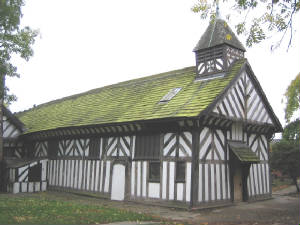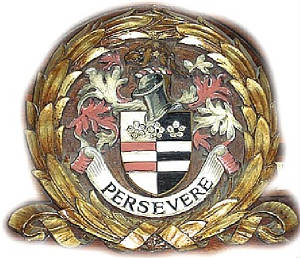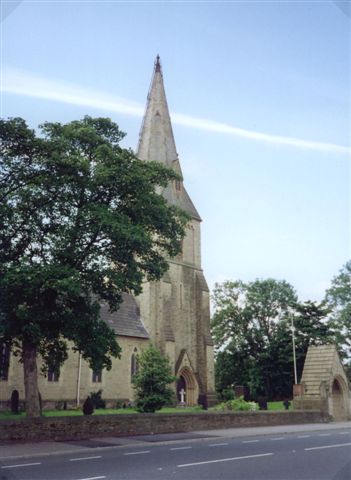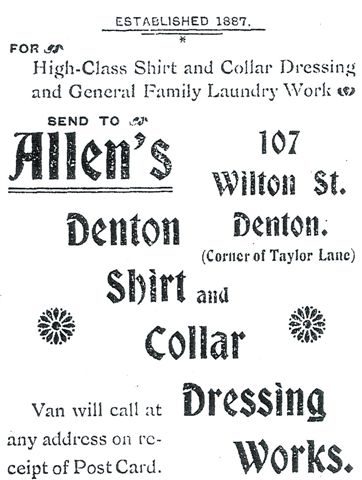|
Denton, Lancashire

St Lawrence's Church
Built in 1530 and known then as St James' Chapel.
Before the Chapel was built the people of Denton
and Haughton had to walk to Manchester or Stockport
to worship.
Before
he died George Cottam (1837) had gone into partnership with George Fitton of Hyde in a Tinplate business. They had a small workshop close to Denton railway station. Following the death of George Cottam, his
widow Sarah Jane having been left with four young children married her husband’s former partner who was seven years
her junior. George Fitton was a widower with a daughter Nellie. We do not know when they married but in 1891 Sarah and her two daughters Ada and Elizabeth were living
at 55, Taylor Lane, Denton, with George Fitton, his daughter, Nellie and Sarah Jane’s mother Elizabeth Moss, aged 74. The two Cottam girls, Ada (aged 18) and Elizabeth (aged
15) were working as Cotton Carders, and Nellie Fitton (aged 10) was still at school.
The two Cottam boys (William and Herbert) were living in Manchester at No.14, Worth Street. William (1869) was married to Harriet and Herbert (1871) was living with them
as a boarder. William like his father was a Tinman, Harriet was a Brushmaker
and Herbert was a Slipper Finisher.

Denton is really a town which developed from the merger of two villages. Both Denton and Haughton
were agricultural communities yet as early as 1571 coal was being mined and in the early 17th Century Flemish Huguenots
were making glass in the area. Coal mining became a very important industry in the two villages and at one time there were
twenty three working coal pits. Another industry ‘Hatting’ developed and became an even more important source
of employment in the 19th century. In 1844, 244 men and 99 women were employed in the industry in Haughton alone. The industry brought prosperity to the town and it began to grow quickly until eventually
thousands of men and women worked in the hat factories. There were never many cotton mills in Denton and Haughton
but the surrounding towns provided employment in the mills for those who wished to travel a short distance. Coal mining ended with the closure due to flooding of Denton Colliery in 1929 and the last hats were made
by the Denton Hat Company in the 1980’s. In the 20th Century as hatting and coal mining declined engineering
became very important for employment opportunities, with Oldham’s Batteries becoming the largest employer in the town.

In
1894 Haughton ceased to have a separate identity and Denton Urban District Council became responsible for its affairs. The town lies on the banks of the River Tame and the name Denton means ‘a village in a valley’. It is six
miles from Manchester city centre and four miles from Stockport. In 1891, 14,000 people lived in the town and in 2005 the population is
around 40,000.

In
1893 Herbert joined the Lancashire Fusiliers as a regular soldier. He served
for twelve years in India,
Malta, Sudan, Egypt, South
Africa and the United Kingdom. Whilst still serving as a soldier he met Clara Ward of Denton and they
married on the 25th
of November 1903 at Christ Church, Denton. Clara
like her father, brother and sisters worked in the felt hatting industry in the town.

Herbert
and Clara began their married life whilst he was still a serving soldier. They
had four daughters, Nellie (1904), Marion (1905),
Annie (1907) and Agnes (1909). Nellie was born at 314, Manchester Road, Denton. In 1905 after being discharged from the army Herbert became a Van Driver for Allen’s
Laundry in Denton. He eventually died aged 47 on 25th November 1918 as a casualty of the great flu epidemic of that year.
Spion Kop
|

